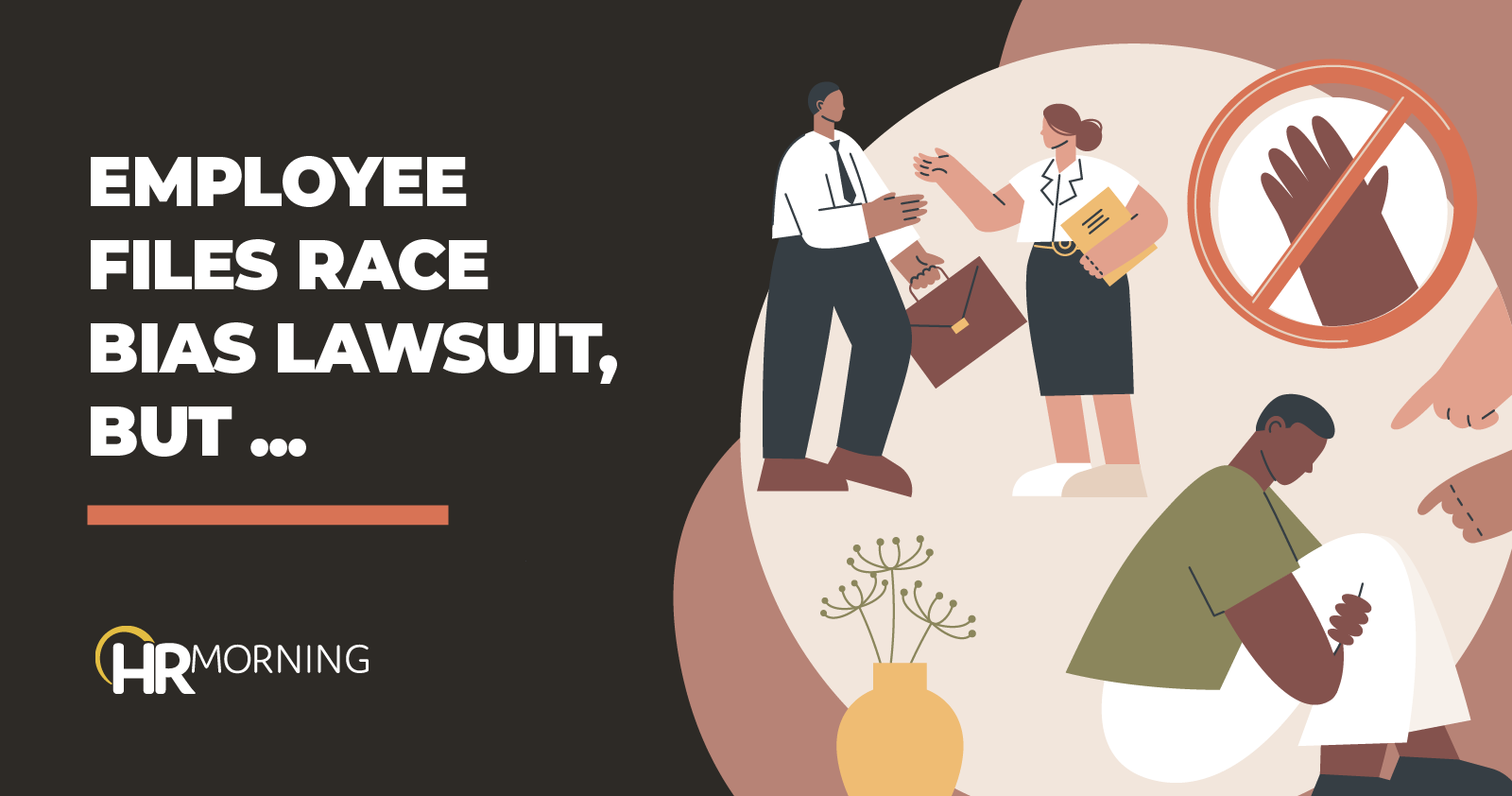Proving unlawful race bias can be an uphill battle for employees. HR professionals can learn a lot from court decisions that say an employee’s supposed evidence of race bias fell short – or really didn’t show race bias at all.
A decision from a federal appeals court demonstrates the point.
This case was filed by Charles Boykin, who is described in the court’s ruling as an African American male.
In 2013, Boykin started working as a manufacturing supervisor for a company called Genzyme Therapeutic Products, LP. He was eventually promoted to a position as a senior site planning analyst.
He was supervised in that role by Michael Haepers, who reported to Paul Beausoleil.
Supervisors express concerns
In 2017, both Haepers and Beausoleil expressed concerns about Boykin’s job performance, saying he was not working quickly enough.
The head of finance also criticized Boykin after the company did not pass an external audit. Boykin internally alleged race bias against the finance head, who apologized. The court’s decision does not provide details about the precise nature of the alleged bias.
Also in 2017, while Boykin was mopping up ice melt, Beausoleil allegedly told another employee that “we finally have a job that [Boykin] can handle.” Boykin believed this alleged comment was racially discriminatory.
Employee gets bad review
In March of 2018, Boykin received a performance review that was bad enough to make him ineligible for a salary increase and bonus. Haepers allegedly told Boykin that Beausoleil lowered Boykin’s job rating because Boykin was “making too much money.” Boykin said this too showed race bias.
Boykin sued, alleging race bias, racial harassment, and retaliation under federal and state law.
A lower court ruled against him, finding he did not show Genzyme’s asserted reason for the bad review – namely, subpar job performance – to be a pretext for race bias. As to the retaliation claim, the lower court found that Boykin did not show that there was a causal connection between his internal complaint of racial bias and the negative performance review. Boykin appealed.
Was it race bias?
The U.S. Court of Appeals for the First Circuit issued a court ruling that upheld the lower court’s decision in favor of the employer.
Because there was no direct evidence of discrimination, Boykin had to make a preliminary case of discrimination. If he did, Genzyme needed to respond by producing a legitimate and nondiscriminatory reason for the bad review. And if it did that, then Boykin had to show that the reason given was really just a pretext for discrimination.
Boykin’s case faltered under this framework, the appeals court said.
Even if the lower court mistakenly concluded that Boykin did not meet his preliminary burden, it said, Boykin’s discrimination claim fell short because he could not show that Genzyme’s asserted reason for the bad review was false.
Boykin argued that the only reason his rating could have been lowered was racial discrimination. That was a possibility, the court said, but it was a theory that Boykin did not back with enough evidence.
Asking for too much
Boykin also argued that the “making too much money” comment could only mean “making too much money for a Black manager.” But even if the comment was unwise, the court said, it could have merely been expressing a nondiscriminatory view that Boyken was making too much money for the work he did.
Boykin also assigned too much weight to the comment about mopping, the court said. Even if it was “racially tinged,” the court explained, it was not by itself enough to show unlawful discriminatory intent.
Instead, it was a “stray and facially ambiguous comment” that did not prove race discrimination, the court said.
The decision for the employer was affirmed.
Key takeaways
In discrimination cases, some evidence is relatively strong while other evidence is relatively weak. For HR professionals, knowing how to evaluate the potential liability attached to specific conduct can help stave off lawsuits by providing a better idea of what conduct crosses the legal line.
On that point, here are a few quick takeaways from this ruling:
- Isolated ambiguous comments will typically not do much to advance an employee’s claim of race discrimination. Here, a supervisor allegedly made precisely such a comment in reference to the mopping of the floor. These types of comments may be taken into account when looking at the whole picture, but by themselves, they do not prove unlawful bias.
- An allegation that “puts words into [a supervisor’s] mouth,” as this decision put it, does not provide strong evidence of discrimination. In this case, the court decided that an alleged comment saying the employee “made too much money” could not reasonably be interpreted to mean only that he made too much money based on his race.
Boykin v. Genzyme Therapeutic Products, LP, No. 23-1667 (1st Cir. 2/16/24).


